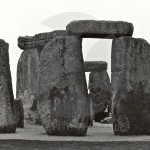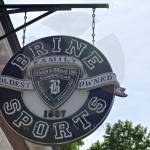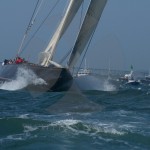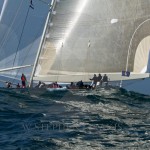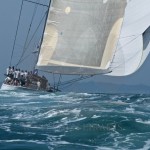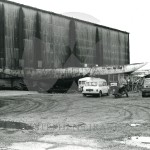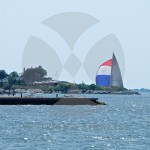Here is a link that will take you to the photos of the “accident” that sank “Amorita” in september 2007. She will be re-launched after an 18 month restoration.
Month: June 2011
THE COVE AND BURKE MOONEY

There is a thread here, thin but a thread. In 1970 I helped Burke Mooney deliver “Chubasco” from Newport to Ft. Lauderdale; leaving Newport in November. For me, there were many tales spawned as a result of this trip. All of them fun memories.
Fort Lauderdale diver ‘humbled’ by Oscar win for ‘The Cove’
March 08, 2010|By Ben Crandell, Staff Writer
Greg “Moondog” Mooney, of Fort Lauderdale, watched the Academy Awards Sunday night like most of us did: With a small gathering of friends at someone’s house.
Of course, his gathering was in Los Angeles, and he watched his film, “The Cove,” win an Oscar.
“It’s been a wild ride,” Mooney said groggily from L.A. on Monday morning.
Mooney, a 47-year-old Stranahan High graduate, runs Moondog Dive Outfitters and is a longtime marine technician for the Oceanic Preservation Society, founded by “The Cove” director Louie Psihoyos.
Coconut Grove dolphin activist Ric O’Barry and expedition director Simon Hutchins, of Fort Lauderdale, were South Floridians in pivotal roles in the filming. Netscape founder and Palm Beach resident Jim Clark financed the film.
“The Cove,” shot secretly over three years, chronicles the annual herding of thousands of dolphins into an isolated cove in Taiji, Japan. Some animals are removed to be exported to marine mammal exhibits around the globe. The rest are slaughtered, stabbed with spears, their meat sold for food in Japan.
Ads by Google
GoPro® Cam Official Store
GoPro®, World’s #1 Sports Cam. Shockproof, Waterproof, 1080p HD!
GoPro.com
Advertisement
“I’m extremely humbled,” Mooney said of “The Cove” winning the Oscar against “unbelievable” competition in the best feature documentary category.
“It’s a very powerful movie. These are very important issues,” Mooney said. “And everyone likes dolphins.”
Mooney said concern for the ocean and its resources is a family affair. His father, Fort Lauderdale yacht captain Burke Mooney, designed and built bow cameras used in “The Cove.”
“My father and I. My sister and mom. Most of the people I associate with around town. That’s our lifestyle. We take it very seriously,” said Mooney. “We’re the Venice of America. It’s who we are.”
Mooney was buoyed by reports that the film’s distribution company has arranged to debut “The Cove” in Japan in May or June.
“This is a depleted environment,” he said. “People have to wake up and look.”
Mooney said he is not sure whether he would receive a golden Oscar statue or where he’d put it if he did. He expects to return to town on Tuesday.
And stardom will not go to his head.
SUMMER SOLSTICE
The day that I always long for , I love the long days of summer. This day at once represents the warm summer light which we long for and the knowledge that every day after this begins to grow shorter. The myth of Persephone is a constant reminder of the long winter nights and the longing for the arrival of spring.
In the meantime I hope you can bask in the glorious sunlight.
in the Northern Hemisphere, summer solstice begins on Jun 21 2011 at 1:16 P.M. EDT
in the UK June 21, 2011 at 17:16 UTC
Sol + stice derives from a combination of Latin words meaning “sun” + “to stand still.” As the days lengthen, the sun rises higher and higher until it seems to stand still in the sky.
As a major celestial event, the Summer Solstice results in the longest day and the shortest night of the year. The Northern Hemisphere celebrates in June, but the people on the Southern half of the earth have their longest summer day in December.
Early Celebrations
Awed by the great power of the sun, civilizations have for centuries celebrated the first day of summer otherwise known as the Summer Solstice, Midsummer (see Shakespeare), St. John’s Day, or the Wiccan Litha.
The Celts & Slavs celebrated the first day of summer with dancing & bonfires to help increase the sun’s energy. The Chinese marked the day by honoring Li, the Chinese Goddess of Light.
Stonehenge Summer Solstice 2010
Perhaps the most enduring modern ties with Summer Solstice were the Druids’ celebration of the day as the “wedding of Heaven and Earth”, resulting in the present day belief of a “lucky” wedding in June.
Today, the day is still celebrated around the world – most notably in England at Stonehenge and Avebury, where thousands gather to welcome the sunrise on the Summer Solstice.
Pagan spirit gatherings or festivals are also common in June, when groups assemble to light a sacred fire, and stay up all night to welcome the dawn.
Summer Solstice Fun Facts
Pagans called the Midsummer moon the “Honey Moon” for the mead made from fermented honey that was part of wedding ceremonies performed at the Summer Solstice.
Ancient Pagans celebrated Midsummer with bonfires, when couples would leap through the flames, believing their crops would grow as high as the couples were able to jump.
Midsummer was thought to be a time of magic, when evil spirits were said to appear. To thwart them, Pagans often wore protective garlands of herbs and flowers. One of the most powerful of them was a plant called ‘chase-devil’, which is known today as St. John’s Wort and still used by modern herbalists as a mood stabilizer.
More about summer solstice around the Web:
On the Web, discover more about the topic, where & how Summer Solstice is celebrated around the world along with related history, folklore and rituals that mark the much-awaited long, bright days of summer ….
Summer Solstice – Good overview of its history, customs & holidays, illustrations, date & time charts and related links, from Wikipedia.
Summer Solstice Celebrations – Ancient & Modern – Skip past the intrusive ads for a detailed discussion about how the day has been celebrated over the centuries, and in many cultures, with suggested reading and related links.
BBC Religion – Summer Solstice – A brief overview of Pagan rituals and ceremonies with related links to more facts & information.
Weird Wilstshire – Summer Solstice – Archived pictures with a report on one particularly successful UK sunrise celebration, including related links & online forum.
The Pagan Festival of Litha – The origins of Druidic Summer Solstice celebrations and their meaning in the natural cycle of seasons.
FATHER’S DAY
Father’s Day day trip. The de Cordova Museum to see the sculpture of Ursula von Rydingsvard. Along the way we met the pair of british bull dogs, a fascinating catalpa tree. as far from boats as we could be in one day.
FATHER’S DAY AND MORE “J” CLASS RACING
Tomorrow is father’s day. It is the first father’s day I have been at home in perhaps 30 years. Now that my children are grown and have children of their own. I have told my wife that we can do whatever she wishes.
I spent today watching the “J” class racing. Ranger has won every start and her tacks and jibes are a little better. The amounts to Ranger having won every race so far.I find it hard to take my eyes off these magnificent boats.
TRANSATLANTIC UPDATE
“J” CLASS REGATTA NEWPORT DAY TWO
These giants of sail are wonderful to look at. Here is the link to the web site for the regatta. Look carefully to find results. Starts (1pm) and finishes are off Ft. Adams which makes easy viewing.
Ranger is a re-creation, built new from scratch. Velsheda is a restoration.
AND THEN THERE WERE NINE
The soap opera that there is the America’s Cup continues. Yesterday the organizers of the 34th America’s Cup along with the mayor of San Francisco to announce 8 challenger teams plus one more to be revealed on june 23rd.
Everyone would agree that this event is reshaping not only the America’s Cup but sailing as we have known it and has not been without growing pains exacerbated by a fragile economy.
“J” CLASS REGATTA, NEWPORT
Aboard “Snow Lion” we were tuning the mast in preparation for the transatlantic race, leaving in 10 days. We still have a lot to do, however I am not worried about the timeline, we are on schedule.
The “J” Class is having a two boat regatta. This is the series Rhode Island claimed would replace the loss of the America’s Cup. Make no mistake these are truly majestic boats; however the regatta was not especially well advertised and not very many people are aware it is taking place.
THE COST TO SAN FRANCISCO
This is a story I have been interested in particularly given that Newport RI was the supposed runner up to host the America’s Cup. I wrote then: Be careful what you wish for. Newport never had and could never find the resources potentially available to San Francisco. It was clear even at the beginning that San Francisco would have an uphill battle. While from a viewing point of view, it is a great venue; from a logistical position, not so much. Tide is a huge factor. Sailing in the commercial traffic channel another potential problem.
The America’s Cup has it’s own issues with a number of teams withdrawing from the competition. I am not saying that the event will not take place, but the timeline may even be altered. there is a lot to accomplish. so far it is mostly a discussion.
Published on San Francisco Examiner (http://www.sfexaminer.com)
Home > America’s Cup short of cash for planning 2013 regatta
America’s Cup short of cash for planning 2013 regatta
The America’s Cup is supposed to provide a huge boost for the local economy while coming at no cost to taxpayers.
America’s Cup organizers have netted only a fraction of the funds The City needs this year to plan the massive 2013 yacht race, but officials said as soon as they receive their tax-exempt status, the money will start flowing.
If it doesn’t, San Francisco taxpayers will be on the hook.
Some $12 million is budgeted in the coming fiscal year for the Mayor’s Office of Economic and Workforce Development to conduct environmental planning and get necessary state and federal permits. Yet the nonprofit responsible for offsetting The City’s $32 million in costs has only $2 million on hand to mitigate the bill.
If the America’s Cup Organizing Committee can’t come up with the other $10 million, it would have to come from San Francisco’s general fund, which is dedicated to basic city services such as police, fire protection and road construction.
A big selling point of the America’s Cup was that it would provide a huge boost for the local economy while presumably coming at no cost to taxpayers.
San Francisco voters have traditionally resisted backing private endeavors with public money, including the rejection of two proposals in the late ’80s for taxpayer money to fund a new waterfront stadium for the Giants.
Under new ownership in 1995, the team announced it would build the first privately financed ballpark since Dodger Stadium went up in 1962.
Voters narrowly approved two 1997 measures that allowed San Francisco to borrow money to rezone and develop the area around Candlestick Park, but The City never moved forward with its $100 million in bonding permission.
Kyri McClellan, executive director of the America’s Cup Organizing Committee, said the tax-exempt approval is expected in August. After that, she predicted, donors will become more comfortable writing seven-figure checks and the committee should raise the remaining millions by October or November, when final impact reports are filed under the California Environmental Quality Act.
“I have every confidence we will meet our obligations in the host-city agreement,” McClellan said, adding that after this year’s $12 million goal, the committee would raise the additional $20 million over the next two years.
The America’s Cup money came into question last week at the Board of Supervisors Government Audit and Oversight Committee during an informational presentation by Mayor Ed Lee’s staff. Supervisor David Campos said later that the committee should be following the money and making sure the entire city has a chance to hear about logistics and impacts of the event.
Most of the 35 or so informational presentations about the America’s Cup “people plan” have been limited to The City’s eastern and northern shores, where the event will be focused. Hundreds of thousands of spectators are expected to watch the races.
“I think we can do a better job … this belongs to all of San Francisco,” Campos said. “The City doesn’t have money right now, which is why we need to make sure this is done right.”
A Board of Supervisors Budget and Finance Committee hearing on America’s Cup funding is set for June 20.
Costs and benefits
$300 million Projected cost for race
$32 million Cost to The City (to be raised by America’s Cup Organizing Committee nonprofit)
$270 million Remaining cost (to be paid by corporate sponsorships and broadcast rights)
$1.4 billion Estimated economic benefits for The City
8,000 Jobs created
Source: Mayor’s Office of Economic and Workforce Development

